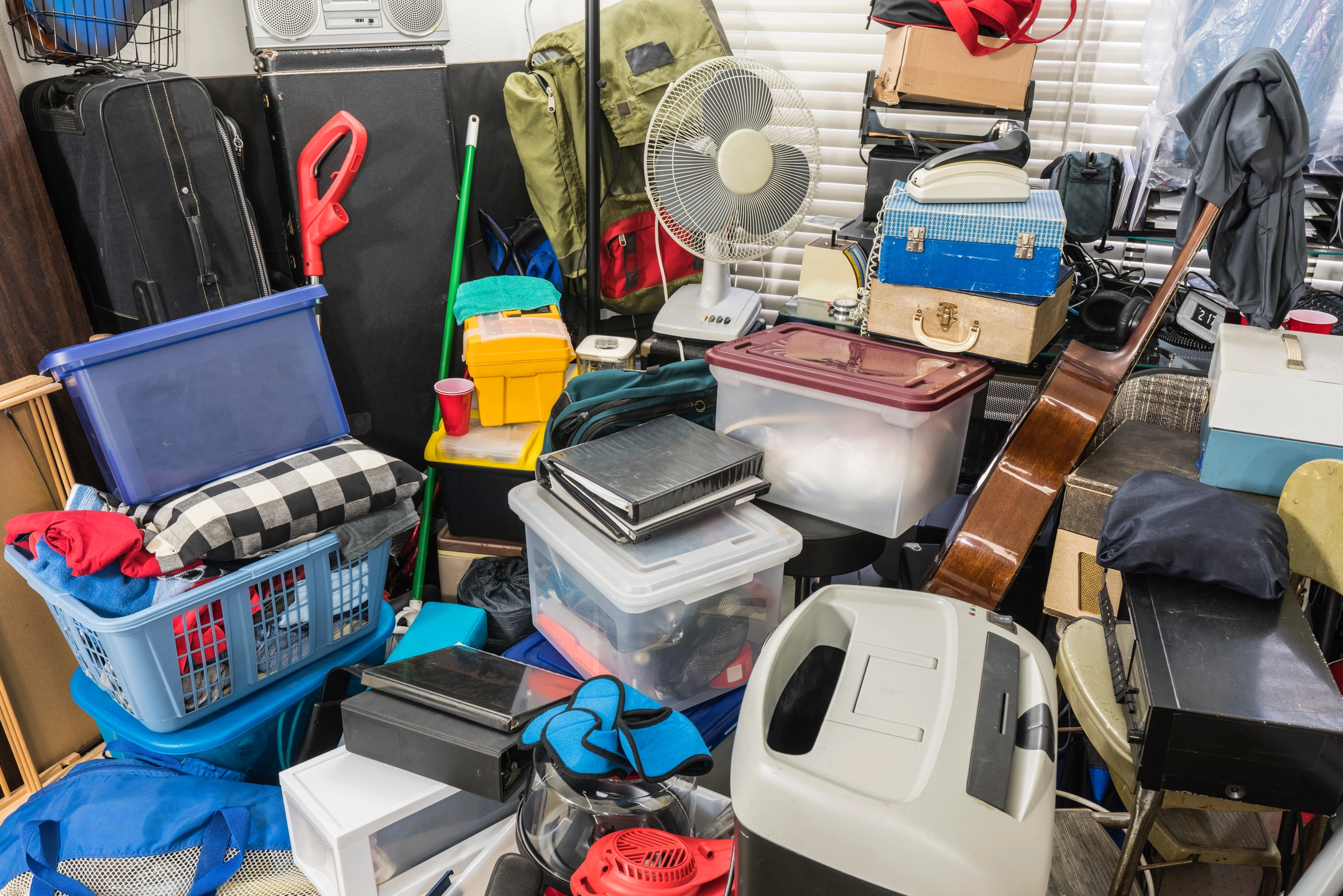
Hoarding, or the persistent acquisition of objects by an individual, can result in a large number of problems for commercial property owners and residential landlords. By itself, the overwhelming number of possessions that a hoarder collects can lead to health and safety hazards for the people and/or animals who live in the dwelling. A very large hoarding problem can also cause damage to the structural integrity of a house or apartment.
What is hoarding?
Mayo Clinic defines hoarding as, “an ongoing difficulty throwing away or parting with possessions because you believe that you need to save them.” Doctors go on to explain that many people who hoard cannot cope with throwing away or being separated from any of their items. When they leave their home for work or to socialize, they tend to find more things to bring back to their collection. This behavior leads to an ever-growing hoard pile of little or no value.
What Are the Dangers of Hoarding
In a mild case, hoarding is not dangerous and has little to no effect on a patient’s life. It is when hoarding becomes severe that it becomes dangerous. According to Griswold Law, a severe hoarding disorder can lead to several structural problems for property owners, including:
- Mold growth
- Pest infestation
- Fire hazard
- Structural Damage
Hoarding Physically Impacts a Property
The answer seems obvious that a hoarding situation would make a property unlivable. However, it is not that simple. Griswold Law points out that a person who hoards does not generally try to keep a property in a good, livable, sustainable, condition. Mental health doctors say hoarders generally do not perform routine maintenance on their home because they do not want anyone to enter their home. Also, the size of the hoard on the property may make it difficult for maintenance workers to access the property.
The National Association of Home Builders recommends regular and routine home maintenance to not only extend the life of a home but to keep it running efficiently. As noted, a hoarding situation can make proper maintenance of a property difficult. This lack of proper maintenance can seriously damage the HVAC, electrical, and plumbing systems within the home or property. This systems, when not properly maintained, break down and can lead to water damage, fire damage, and other hazards.
Hoarding Increases the Risk of Fire Damage at a Property
Officials with the City of Melbuorne, Florida, note that hoarding increases the risk of fire at a property. More seriously the hoarding act of, “stacking and placement of some materials can trigger a fire, make a fire spread more rapidly and be harder to contain, and/or make it more difficult for occupants to escape or for emergency responders to get to people in need.” Fires that occur in these homes also pose a problem for firefighters.
The National Fire Protection Association notes first responders can be put at serious risk in a burning hoarder’s home. They often find themselves in danger in this situation, “due to obstructed exits, falling objects, and excessive fire loading that can lead to collapse.”
The City of Melbourne City, Florida, continues, “Fires that happen in hoarding households are also more dangerous for emergency responders. They often require nearly twice the manpower than that of a typical residential home fire.” Additionally, “Responding firefighters can be put at risk due to obstructed exits, falling objects, and excessive fire loading that can lead to collapse.”
The neighboring homes are also at risk from a burning hoarder’s home. “Excessive smoke and fire conditions can impact neighbors living adjacent to a hoarding household, as well,” notes the City of Melbourne, Florida.
Hoarding Increases the Risk of a Building Collapse
Boise Cascade Wood Products notes, “U.S. building codes specify a uniform live load of 40 pounds per square foot for most residential floor designs.” Otherwise, we would not be able to furnish our homes with furniture and other belongings. Hoarders tend to pile their items without thinking about the sheer weight of what they have collected. According to Coroner Talk, “The weight of debris and hoarded items are often more than the floors are able to withhold. The sheer volume of debris in a room can push up against walls, not only damaging their integrity, but also putting the ceiling and roof at risk of collapse.”
Sometimes a hoard becomes so large that walls, floors, and even ceilings, collapse. Coroner Talk also notes the collapse of these essential interior structures, “can cause gas lines and water pipes to break, resulting in fire and flood damage.” Without structure, a building will collapse.
Call SERVPRO® When You Need Hoarding Cleanup
It is no easy task to clean a property that has been used for hoarding. That’s why calling your local SERVPRO is always the right choice when you need hoarding cleanup services. Our professionals have the right tools and equipment for this specific type of specialized cleaning. We quickly assess the situation and get to work to begin the cleanup. We have protective gear, patented cleaning supplies, and we are committed to making sure you receive the highest level of cleanup, repair, and restoration possible. And, each of our SERVPRO locations is staffed with a team of IICRC certified specialists, so you know your individual property will receive the highest level of cleanup, repair, and restoration standards.
If your property experiences fire damage, water damage, or even mold damage, due to a hoarding situation, call one of our 2290 SERVPRO locations in the United States and Canada. Our 24-hour emergency services are available to everyone. We respond to your call within an hour, and we always answer the phone, including weekends and holidays.
For more information, check out our Specialty Cleaning Resources